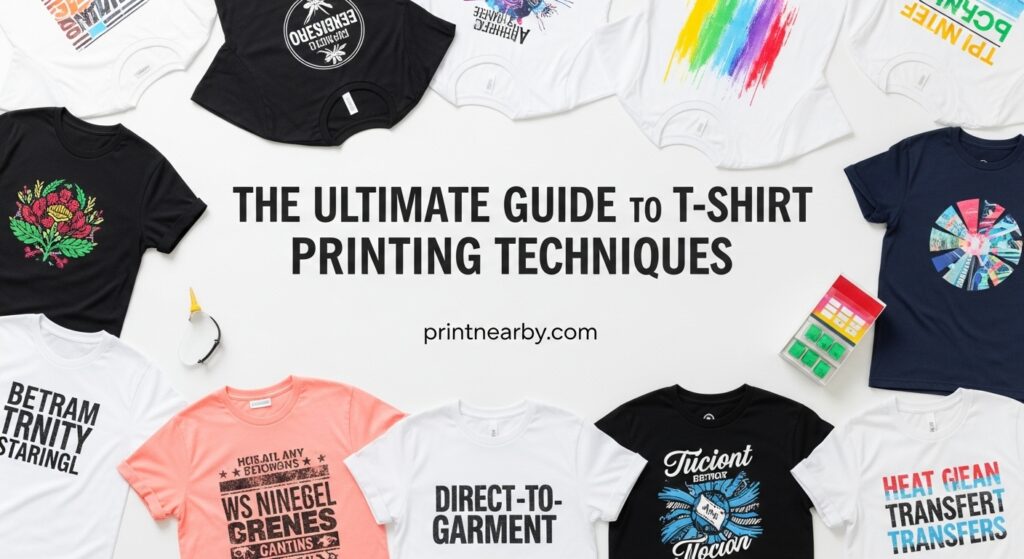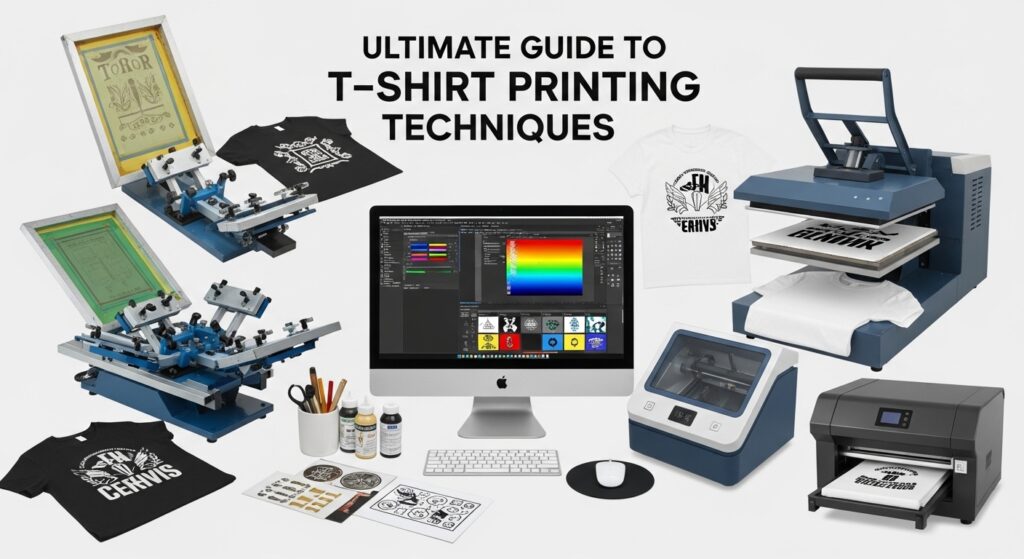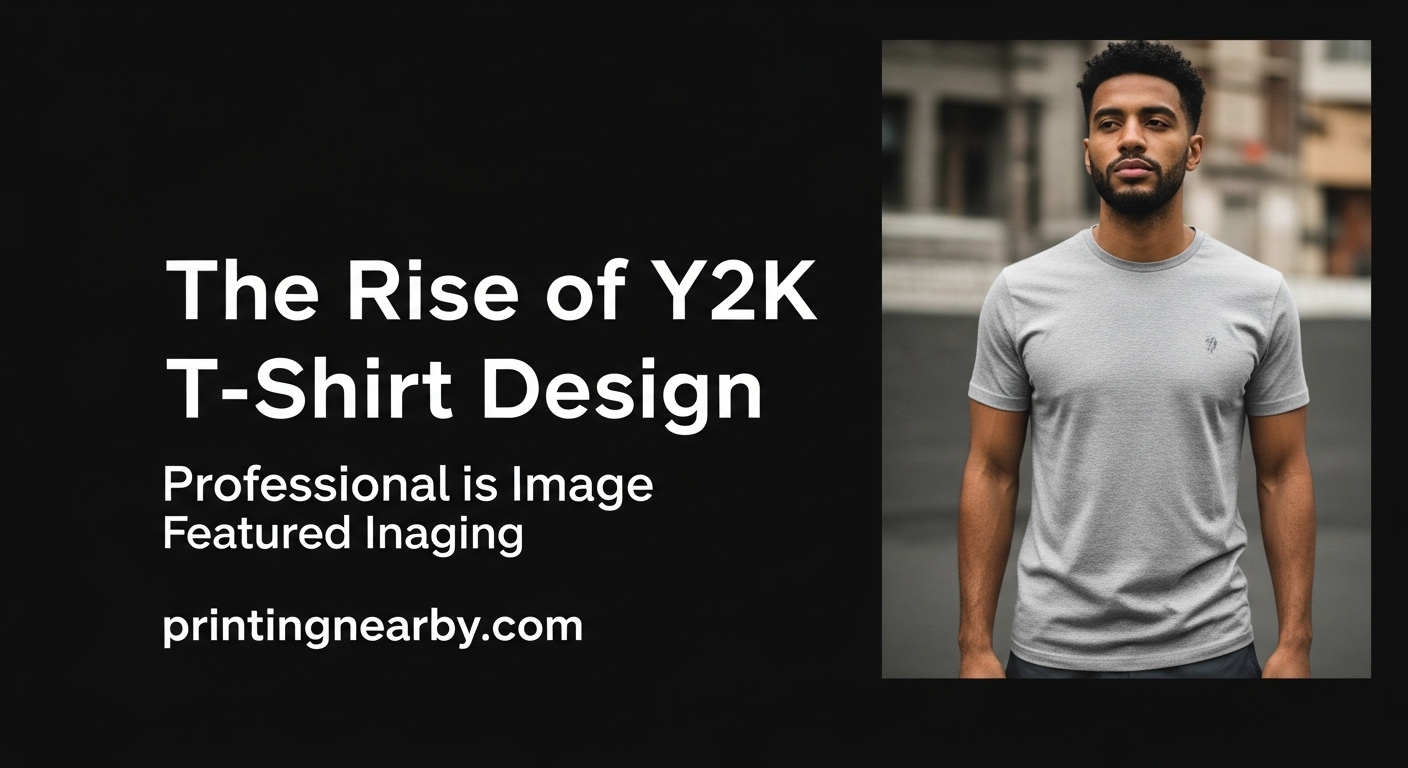
Custom t-shirts are more than just fashion statements – they’re tools for branding, self-expression, and business growth. Whether you’re starting a clothing line, running a print shop, or simply creating designs for fun, knowing the best t-shirt printing techniques can help you deliver top-quality results that keep customers coming back.
This guide covers the top methods used in the apparel industry today, including pros, cons, and when to use each one. Let’s dive in.
1.Best Method For T-Shirt Printing Techniques

2. Screen Printing
Screen printing is one of the most common and reliable t-shirt printing techniques. It involves pushing ink through a mesh screen to apply a design to the fabric.
- Best for bold designs with limited colors
- Extremely cost-effective for bulk orders
- Offers vibrant and durable prints
Example: If you’re producing 100 shirts with a simple logo, screen printing delivers long-lasting quality at a low per-shirt cost.
3. Direct-to-Garment (DTG) Printing
DTG uses inkjet technology to print directly onto fabric, similar to a desktop printer.
- Excellent for full-color, complex artwork
- Requires minimal setup, ideal for small batches
- Works best on 100% cotton
Tip: Designers often use DTG to test artwork or sell limited-edition designs online.
4. Heat Transfer Printing
This technique applies designs to garments using heat and pressure, typically through transfer paper.
- Great for beginners and DIY setups
- Works well for photos and complex graphics
- Less durable over time compared to screen printing
Example: Small businesses use heat transfer to offer one-off prints or samples before committing to large runs.
5. Sublimation Printing
Sublimation printing uses heat to transfer dye onto polyester fabrics. The ink turns into gas and becomes part of the fabric.
- Ideal for all-over prints and bright colors
- Only works on light-colored polyester garments
- Results are soft, breathable, and long-lasting
Example: Sportswear brands use sublimation for custom jerseys and activewear.
6. Vinyl Cutting and Heat Press
Vinyl printing involves cutting designs out of colored vinyl sheets and pressing them onto garments.
- Durable and great for simple graphics
- Perfect for lettering and numbers
- Can feel heavier than ink-based prints
Tip: Use vinyl for names, team uniforms, or custom promotional items.
7. Plastisol Transfers
Plastisol transfers are screen-printed designs prepared on transfer paper and later heat-pressed onto garments.
- Delivers screen print quality with less equipment
- Flexible for on-demand printing
- Requires precise heat application
Example: Print shops use plastisol transfers to keep popular designs in stock for quick application.
8. Discharge Printing
Discharge printing removes the garment’s dye and replaces it with new pigment, leaving a soft, natural feel.
- Best for dark 100% cotton shirts
- Creates a vintage or muted look
- Limited compatibility with synthetic fabrics
Tip: Ideal for retro-style collections or streetwear designs.
Key takeaway: Choose discharge printing for vintage vibes on dark cotton garments.
9. Water-Based Inks
Water-based inks soak into the fabric instead of sitting on top like plastisol.
- Eco-friendly and soft to the touch
- Best on light-colored shirts
- Requires careful curing and drying
Example: Sustainable clothing brands use water-based inks to maintain a soft, breathable finish.
10. Puff Printing
Puff printing involves adding a heat-activated additive to ink that expands during curing, creating a raised effect.
- Adds texture and 3D appearance
- Best for bold, simple elements
- Not suitable for fine details
Tip: Use puff prints on branding elements like logos or bold text.
10. Hybrid Printing Techniques
Hybrid printing combines two or more methods for greater flexibility and creativity.
- Allows unique textures and print styles
- Useful for special projects or limited editions
- Requires skill and understanding of multiple techniques
Example: Use DTG for the main design and add vinyl lettering for names or numbers.
How to Choose the Right T-Shirt Printing Method
When selecting a technique, consider these factors:
- Design complexity: Detailed, colorful artwork? Choose DTG or sublimation.
- Fabric type: Cotton works well with DTG and screen; polyester is ideal for sublimation.
- Order size: Large batches? Go with screen printing. Small, custom orders? DTG or heat transfer.
- Budget and equipment: Start simple with vinyl or heat transfer. Invest in screen or DTG for scaling.
Conclusion: Start Printing Smarter
Whether you’re launching a clothing brand, fulfilling customer orders, or just exploring your creative side, mastering different t-shirt printing techniques gives you the edge. Each method has its own advantages, and the best one for you depends on your specific needs and vision. Understand your audience, experiment with small runs, and invest in quality where it matters. With the right tools and know-how, you can produce prints that impress and last.
Frequently Asked Questions (FAQs)
1. What’s the best t-shirt printing method for beginners?
Heat transfer or vinyl printing are affordable, easy to learn, and require minimal equipment.
2. Which method is best for complex, colorful designs?
Direct-to-garment (DTG) and sublimation printing offer the most accurate reproduction of full-color images.
3. What’s the most eco-friendly t-shirt printing technique?
Water-based inks are more sustainable and environmentally friendly than plastisol.
4. Can I combine different printing methods?
Yes! Hybrid printing allows you to create unique designs by mixing methods like DTG and vinyl.
5. What technique works best for polyester shirts?
Sublimation is ideal for polyester and delivers long-lasting, vibrant prints



